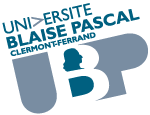Greenhouse Module for Space System: A Lunar Greenhouse Design
Résumé
In the next 10 to 20 years humankind will return to the Moon and/or travel to Mars. It is likely that astronauts will eventually build permanent settlements there, as a base for long-term crew tended research tasks. It is obvious that the crew of such settlements will need food to survive. With current mission architectures the provision of food for long-duration missions away from Earth requires a significant number of resupply flights. Furthermore, it would be infeasible to provide the crew with continuous access to fresh produce, specifically crops with high water content such as tomatoes and peppers, on account of their limited shelf life. A greenhouse as an integrated part of a planetary surface base would be one solution to solve this challenge for long-duration missions. Astronauts could grow their own fresh fruit and vegetables in-situ to be more independent from supply from Earth. This paper presents the results of the design project for such a greenhouse, which was carried out by DLR and its partners within the framework of the Micro-Ecological Life Support System Alternative (MELiSSA) program.The consortium performed an extensive system analysis followed by a definition of system and subsystem requirements for greenhouse modules. Over 270 requirements were defined in this process. Afterwards the consortium performed an in-depth analysis of illumination strategies, potential growth accommodations and shapes for the external structure. Five different options for the outer shape were investigated, each of them with a set of possible internal configurations. Using the Analytical Hierarchy Process, the different concept options were evaluated and ranked against each other. The design option with the highest ranking was an inflatable outer structure with a rigid inner core, in which the subsystems are mounted. The inflatable shell is wrapped around the core during launch and transit to the lunar surface. The paper provides an overview of the final design, which was further detailed in a concurrent engineering design study. During the study, the subsystem parameters (e.g. mass, power, performance) were calculated and evaluated. The results of the study were further elaborated, leading to a lunar greenhouse concept that fulfils all initial requirements. The greenhouse module has a total cultivation area of more than 650 m² and provides more than 4100 kg of edible dry mass over the duration of the mission. Based on the study, the consortium also identified technology and knowledge gaps (not part of this paper), which have to be addressed in future projects to make the actual development of such a lunar greenhouse, and permanent settlements for long-term human-tended research tasks on other terrestrial bodies, feasible in the first place.
Domaines
Autre
Fichier principal
 [2017] Zeidler Greenhouse Module for Space System A Lunar Greenhouse Design.pdf (5.24 Mo)
Télécharger le fichier
[2017] Zeidler Greenhouse Module for Space System A Lunar Greenhouse Design.pdf (5.24 Mo)
Télécharger le fichier
Origine : Fichiers éditeurs autorisés sur une archive ouverte
licence : CC BY NC ND - Paternité - Pas d'utilisation commerciale - Pas de modification
licence : CC BY NC ND - Paternité - Pas d'utilisation commerciale - Pas de modification





